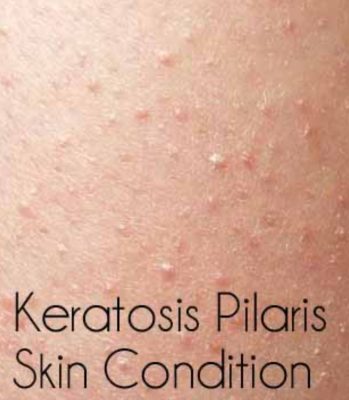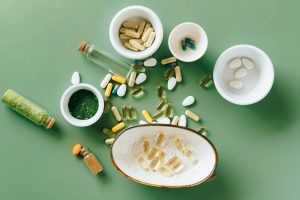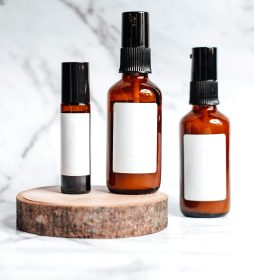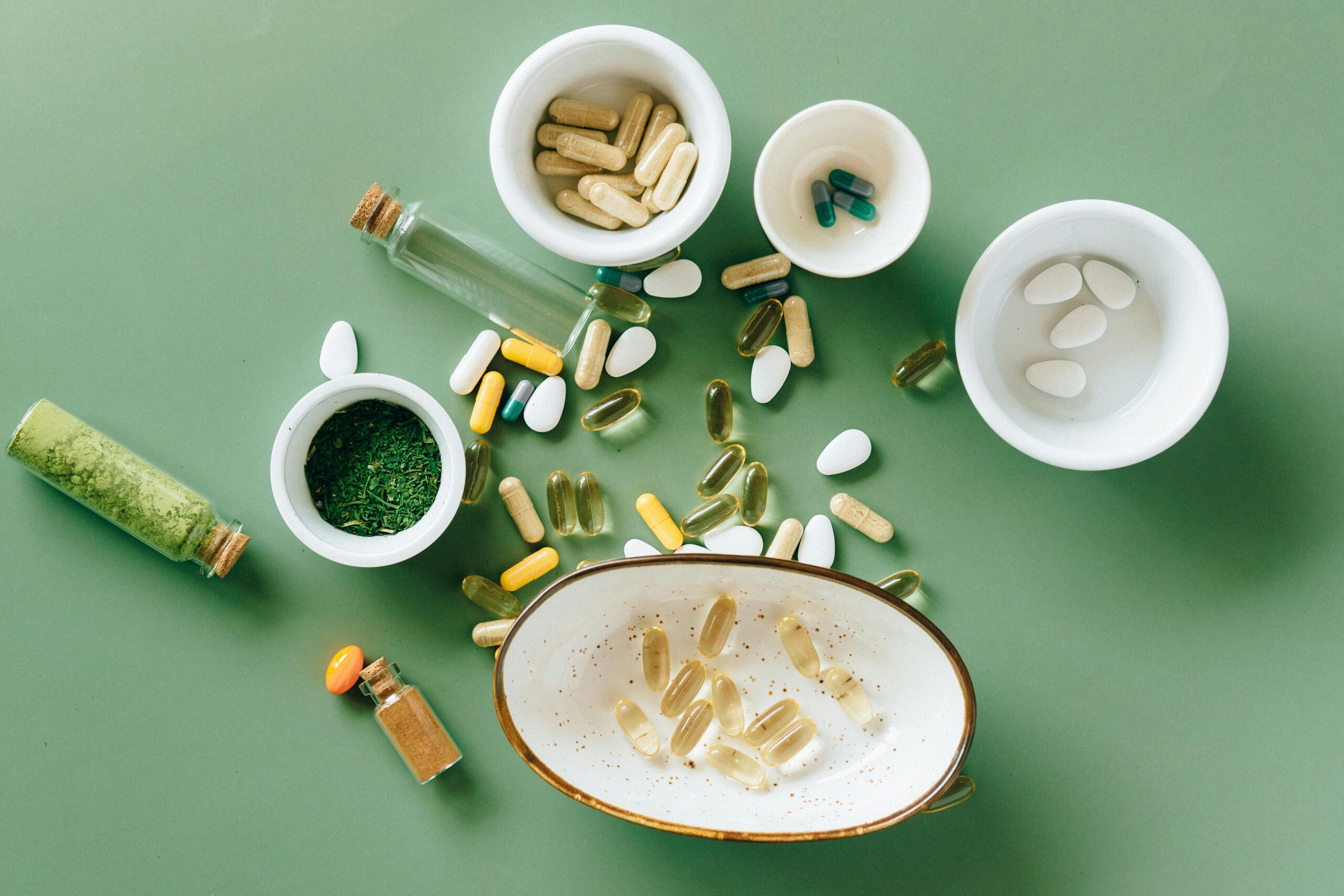Keratosis Pilaris: The Complete Guide to Understanding and Treating ‘Chicken Skin’
Keratosis Pilaris (KP) is a common but stubborn skin condition that affects millions of people worldwide. This condition is often referred to as “chicken skin” because it causes small, rough bumps to appear on the skin, particularly on the arms, thighs, buttocks, and face.
Though harmless, KP can be persistent and challenging to treat, which often leads to frustration for individuals seeking smoother, more even skin. Unfortunately, this condition doesn’t improve with just basic skincare routines. Instead, KP requires a comprehensive approach that combines exfoliation, moisturization, and in some cases, professional treatments.
At Anita’s Skincare Clinic in Katy, Texas, we offer personalized treatments and skincare regimens that address the specific causes of KP. In this guide, we will explore the science behind KP, the best treatment options, and dietary and supplement changes that may help improve skin health and reduce KP outbreaks.
What is Keratosis Pilaris?
Keratosis Pilaris (KP) is a chronic skin disorder that causes keratin, a protein found in the skin, to accumulate in hair follicles, forming small, hard bumps on the skin’s surface. These bumps can appear red, white, or brown and are typically associated with dry, rough patches. The exact mechanism behind the formation of KP remains complex, but understanding its underlying causes can help us treat it more effectively.
Scientific Explanation of KP Formation
Keratin is an essential protein in the skin that plays a critical role in protecting the skin’s surface from external elements. However, when keratin-producing cells (called keratinocytes) produce excessive amounts of this protein, it can clog hair follicles. As a result, keratin plugs block the pores, causing the characteristic bumps of KP.

This condition is often a result of impaired skin cell turnover, which means the old skin cells don’t shed as they should, leading to an accumulation of keratin on the surface. Over time, this leads to rough, textured skin.
Key Factors That Contribute to KP:
- Genetics – KP is often inherited, meaning individuals with a family history of KP are more likely to develop it.
- Environmental Factors – Cold weather, low humidity, and indoor heating can cause dryness, exacerbating the condition.
- Skin Type – People with dry skin or conditions such as eczema or atopic dermatitis may be more prone to KP.
- Hormonal Changes – Puberty and pregnancy are common times when KP tends to worsen due to hormonal fluctuations.
Symptoms of Keratosis Pilaris
Although KP is generally harmless, it can cause cosmetic concerns for individuals who prefer smooth, clear skin. The symptoms of KP include:
- Small, raised bumps that feel rough to the touch
- Red, white, or brown-colored bumps on the skin
- Dry, scaly skin around the bumps
- Itchiness or irritation (though uncommon)
- Worsening of symptoms in winter months
When KP Symptoms Are More Noticeable:
- Winter weather – Dry, cold air strips moisture from the skin, which worsens the appearance of KP.
- During hormonal changes – Such as puberty, pregnancy, or menstruation, when the skin is more likely to produce excess keratin.
Who Can Develop Keratosis Pilaris?
Keratosis pilaris can affect people of all ages, but it is most common in children, teenagers, and women. Those with certain skin conditions or health factors are more likely to experience it, including individuals with:
- Dry skin
- Eczema
- Ichthyosis (a condition causing very dry, scaly skin)
- Hay fever (allergic rhinitis)
- Obesity
The condition usually appears in childhood or adolescence and often improves with age. Many people see it fade in their mid-20s, and it is typically gone by the time they reach 30.
Hormonal changes, such as those during puberty or pregnancy, can trigger flare-ups. Additionally, keratosis pilaris tends to be more common in people with lighter skin tones.
What Causes Keratosis Pilaris?
1. Keratin Overproduction
The root cause of KP is excess keratin production in hair follicles. When keratin is overproduced, it traps dead skin cells inside the follicles, leading to the formation of hard, raised bumps.
This overproduction may occur due to genetic factors, which are passed down through families. People with dry skin conditions are also more likely to experience keratin buildup in their follicles.
2. Genetic Predisposition
KP tends to run in families. Research suggests that 70% of individuals with KP have a family history of the condition. This makes genetics a significant factor in developing KP.
3. Imbalance in Skin Cell Turnover
The skin naturally goes through a cell turnover process, where old skin cells shed and new ones are formed. In people with KP, this process may be slower, which results in dead skin cells accumulating on the surface of the skin and causing the characteristic bumps.
4. Environmental Factors
Cold weather and dry environments exacerbate the condition by drying out the skin, which causes further keratin buildup. Using hot water during showers also strips the skin of its natural oils, making it harder for the skin to shed cells.
Diet, Supplements, and Lifestyle Tips to Help Manage KP
While external treatments like exfoliants and moisturizers are critical in managing KP, internal factors, such as diet and supplements, play an important role in supporting skin health.
Dietary Recommendations to Support Skin Health:
A well-balanced diet rich in essential vitamins and nutrients is essential for promoting healthy skin. Here’s how you can optimize your diet for KP:
1. Vitamin A
Vitamin A plays an important role in skin cell turnover, helping to keep skin healthy and preventing the buildup of excess keratin. You can find Vitamin A in foods like:

- Carrots
- Sweet potatoes
- Spinach
- Eggs
- Liver
2. Omega-3 Fatty Acids
Omega-3 fatty acids have powerful anti-inflammatory properties that can help reduce redness and irritation associated with KP. Try incorporating more omega-3s into your diet by eating:
- Fatty fish (salmon, mackerel, sardines)
- Chia seeds
- Flaxseeds
- Walnuts
3. Zinc
Zinc is a vital mineral that promotes skin healing and immune function. It can help to reduce inflammation and support healthy skin. Foods rich in zinc include:
- Pumpkin seeds
- Legumes (chickpeas, lentils)
- Shellfish (oysters, crab)
- Beef and chicken
4. Vitamin D
Vitamin D helps maintain the skin’s barrier function and reduces inflammation. It’s important to get enough Vitamin D, especially if you live in an area with limited sun exposure. Good sources include:
- Egg yolks
- Fatty fish (salmon, mackerel)
- Fortified foods (cereal, dairy)
Supplements for Managing KP:
In addition to dietary changes, certain supplements can help promote smoother skin and reduce the symptoms of KP.
1. Fish Oil (Omega-3 Fatty Acids)
Omega-3 fatty acids from fish oil supplements can significantly reduce inflammation and support healthy skin cell function.

2. Vitamin A Supplements
If your diet lacks sufficient Vitamin A, a supplement may help support skin regeneration and reduce keratin buildup. However, always consult with a healthcare professional before taking Vitamin A supplements, as excessive amounts can be harmful.
3. Zinc Supplements
If your zinc levels are low, consider a zinc supplement to improve skin health and reduce inflammation. Zinc can be particularly helpful for people prone to acne or KP.
4. Probiotics
Probiotics support gut health, which in turn can promote skin health. An imbalance in gut bacteria may contribute to skin issues, including KP. Adding probiotics to your routine can help balance the microbiome and potentially reduce KP flare-ups.
Best Products for Keratosis Pilaris
1. Exfoliating Ingredients
Exfoliation is key in treating KP. Using products with active exfoliants like lactic acid, glycolic acid, and salicylic acid can help remove keratin plugs and smooth the skin.
Best Exfoliating Products for KP :
- Paula’s Choice Skin Perfecting 8% AHA Gel (Glycolic Acid)
- AmLactin Daily Moisturizing Body Lotion (Lactic Acid)
- CeraVe SA Cream (Salicylic Acid + Urea)

2. Hydrating & Barrier Repair Products
Hydration is equally important, as dry skin exacerbates KP. Use products with ceramides, hyaluronic acid, and shea butter to lock in moisture and maintain the skin barrier.
Best Hydrating Products for KP :
- First Aid Beauty Ultra Repair Cream
- CeraVe Moisturizing Cream (with Ceramides)
- Eucerin Advanced Repair Lotion
3. Retinoids for Skin Smoothing
Retinoids like adapalene or tretinoin help to unclog follicles and increase skin cell turnover, promoting smoother skin over time.
Best Retinoid Products :
- Differin Gel (Adapalene 0.1%) – Over-the-counter retinoid
- Tretinoin (Prescription-Only) – More potent option for stubborn KP
Lifestyle and Home Remedies for Keratosis Pilaris
Although keratosis pilaris cannot be completely prevented or cured through home care, certain practices can improve the appearance of the affected skin. If trying a new skincare product, test it on a small area first to ensure it doesn’t cause irritation before applying it more widely.
Helpful Skincare Tips
- Use Warm Water and Shorten Bath Time : Long, hot showers strip the skin of natural oils, making dryness worse. Instead, opt for warm water and keep showers or baths under 10 minutes.
- Be Gentle on Your Skin : Avoid harsh soaps that dry out the skin. When exfoliating, use a soft washcloth or loofah instead of scrubbing vigorously, as aggressive exfoliation can irritate the skin and worsen the condition. After bathing, pat the skin dry instead of rubbing, leaving some moisture on the surface.
- Try Medicated Creams : Over-the-counter creams with ingredients like urea, lactic acid, alpha hydroxy acids, or salicylic acid can help remove dead skin cells and soften rough patches. For best results, apply them before using a moisturizer.
- Keep Your Skin Hydrated : Moisturize immediately after bathing while the skin is still damp. Choose thicker creams that contain ingredients like lanolin, petroleum jelly, or glycerin, as they help lock in moisture. Products such as Eucerin and Cetaphil are good options. Reapply moisturizer several times a day, especially to dry areas.
- Use a Humidifier : Dry indoor air can worsen skin dryness. Using a humidifier at home helps maintain moisture levels in the air, preventing excessive dryness.
- Avoid Tight Clothing : Friction from tight fabrics can irritate the skin and make keratosis pilaris worse. Opt for loose-fitting, breathable clothing to reduce irritation.
By following these simple steps, you can help keep your skin smoother and more comfortable.
In-Clinic Professional Treatments
For severe KP, professional treatments may offer faster and longer-lasting results. These include:
- Microdermabrasion – Gently exfoliates the outer layers of skin to smooth texture
- Hydrodermabrasion – Combines exfoliation with deep hydration
- Chemical Peels – A mixture of glycolic or lactic acid peels to renew skin
- Jet Plasma Therapy – Uses plasma technology to smooth and tone KP-prone skin
At Anita’s Skincare Clinic, we offer personalized treatments designed to address your specific KP needs.
How Is Keratosis Pilaris Diagnosed?
Doctors diagnose keratosis pilaris by examining the skin and reviewing the patient’s medical history. A dermatologist can usually identify the condition just by looking at the affected areas.
Key factors considered during diagnosis include:
- Age of the individual
- Appearance of the skin
- Location of the rough or bumpy patches
There are no specific tests required to confirm keratosis pilaris, as its distinct texture and pattern make it easy to recognize.
Getting Ready for Your Appointment
If you’re experiencing skin concerns, your first step is usually visiting a general healthcare provider. In some cases, you may be referred to an esthetician or dermatologist for a more detailed evaluation. To make the most of your appointment, it’s helpful to prepare a list of questions in advance.
For keratosis pilaris, you might consider asking:
- What could be causing these symptoms?
- Are there other conditions that might be responsible for this?
- Is this a temporary issue, or is it likely to persist long-term?
- What are the best treatment options available?
- Are there alternative treatments if the first option doesn’t work?
- Is there a more affordable, generic version of any prescribed medication?
Having these questions ready can help ensure you get the right information and guidance for managing your skin condition effectively.
Book a KP Treatment at Anita’s Skincare Clinic
If you’re struggling with keratosis pilaris and want to see real results, schedule a personalized consultation at Anita’s Skincare Clinic in Katy, Texas. We specialize in:
- Exfoliating facials and chemical peels
- Deep hydration treatments
- Customized skincare plans tailored for KP-prone skin
Book your consultation today and start your journey toward smoother, healthier skin! ✨
Click here to schedule your appointment!


